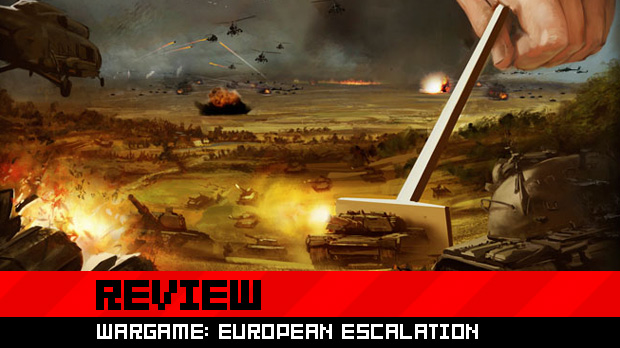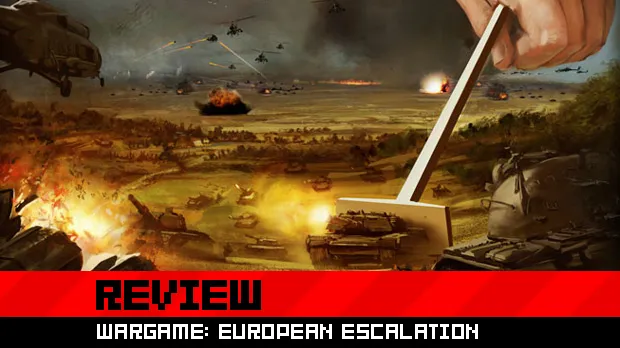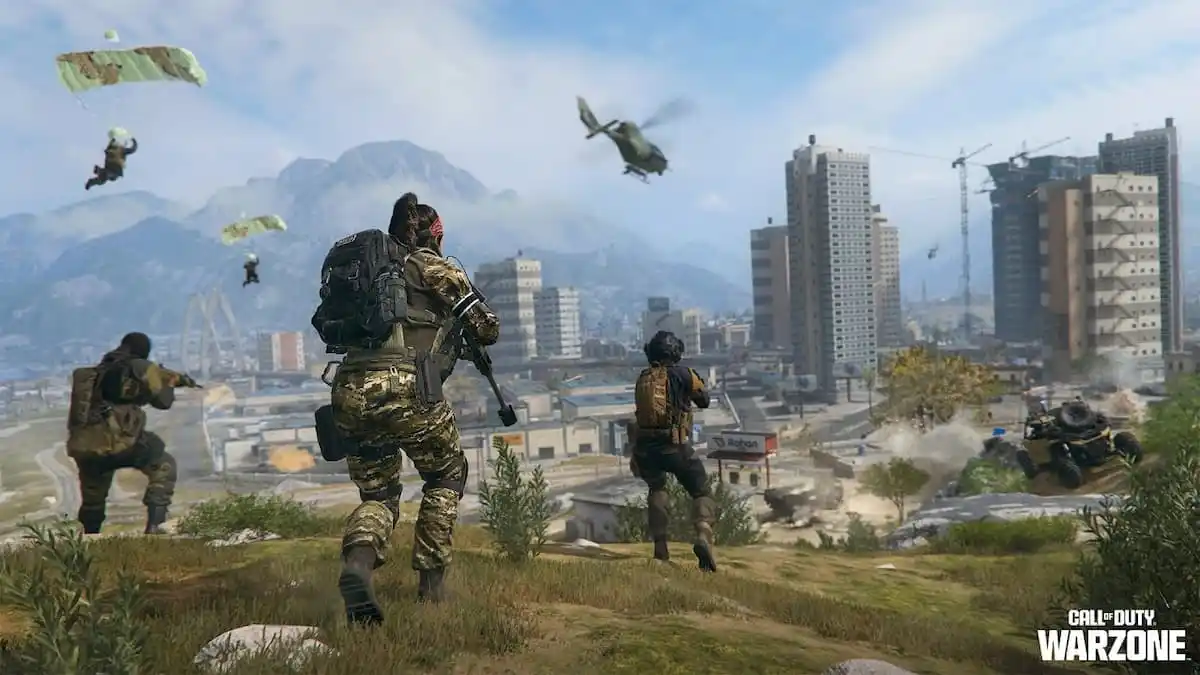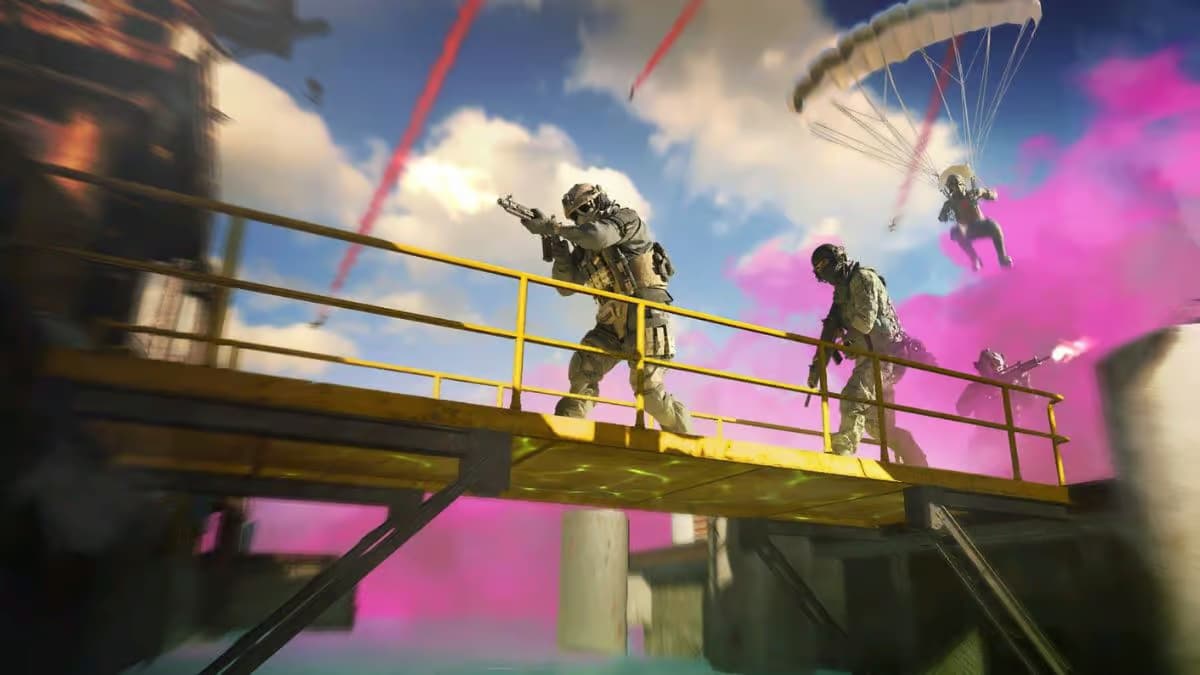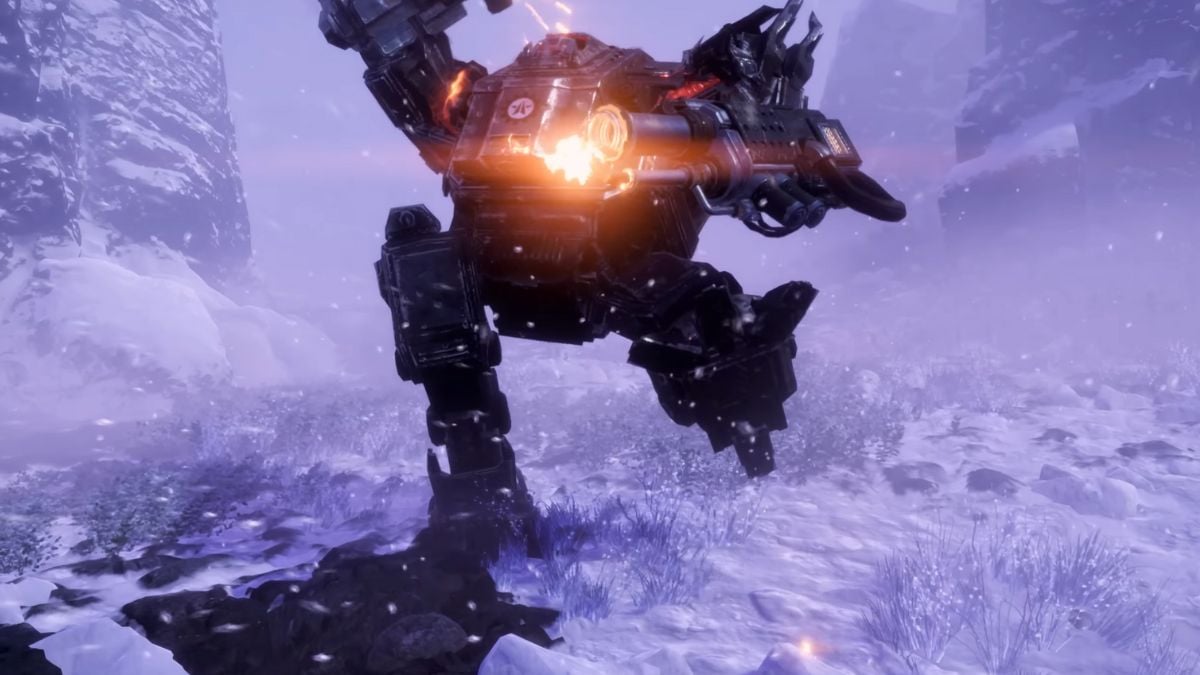Growing up during the dawn of PC strategy games, playing everything from Dune II and Command & Conquer to Panzer General, took its toll on my teenage years. History classes only became worth paying attention to when it concerned old battles and famous generals, and I even had a period where I was convinced I was destined to become a battlefield commander when I grew up.
As I quickly learned when the PC real-time strategy genre became more competitive in the online age, the last place I should be is in a position where I command lives without a restart option. That itch for virtual battlefield control has never waned, however, and while the Total War games provide a good scratch, they are sorely lacking in enabling modern military prowess.
Almost 20 years later, I can finally fulfill my dreams of becoming a modern-era military commander in Wargame: European Escalation. And 20 years later, it’s still painfully clear that I’m unfit for command.

Wargame: European Escalation (PC)
Developer: Eugen Systems
Publisher: Focus Home Interactive
Released: February 23, 2012
MSRP: $39.99
Rig: Intel E8400 Core2 Duo @3.0GHz, 4GB RAM, ATI Radeon HD4830 512MB, Windows 7 64-bit
Eugen Systems impressed with their Act of War games and followed it up with the ambitious R.U.S.E.. This time around, they’ve left the accessibility of their previous titles far behind in favor of the kind of hardcore military RTS they’ve been waiting to work on. Wargame doesn’t quite go as far into niche territory as a simultaneous turn-based strategy game with hexes does, but it’s by all accounts a game geared toward the kind of military fetishists who thought the only good thing about Transformers: Revenge of the Fallen was when the AC-130 was told to use SABOT rounds.
This passion for military hardware, especially tanks, is evident on many levels of Wargame. Countless units and unit variations for NATO and Warsaw Pact forces have all been painstakingly recreated in full detail, but the level of dedication doesn’t stop there. Set during an alternate-history period of the 1975-1985 Cold War era with a focus on conventional warfare, it quickly becomes clear just how serious Eugen is about its hardware and tactics.
Something that RTS titles generally fail at is bridging the gap between creating a game that is fun to play and easy to understand, and the intricate complexities that stem from a mindset of military power in the 20th century. Usually you have your tanks, infantry, and artillery that all do a pre-set level of mitigated damage against different types of units. Once you figure out how it works, you either mass powerful units and attack, or use whatever rock-paper-scissors system there is to counter opposing forces effectively.
It makes for a fun but unrealistic RTS like we’ve seen in games such as World in Conflict and Ground Control, but where Wargame differs is in the way it looks at what a military unit is. Instead of offering to build a few types of tanks that differ in their uses slightly, a tank in Wargame isn’t simply a unit you use to shoot at things. It’s a weapon platform first, and an armored and mobile one second. A helicopter? That’s a flying platform for air-to-ground missiles, rocket pods, and machine guns. Nothing more and nothing less.
This way of thinking offers a fresh take on the strategy genre, supported by a plethora of different available units that all have their own weapons and statistics. Before long, you no longer think of infantry as a group of grunts that’s only good against other infantry or capturing locations, but as a mobile anti-air or anti-tank weapon that just happens to be wielded by human beings. Likewise, a tank becomes a specific type of anti-armor gun that is able to drive around, preferably with as many other kinds of weaponry you can fit on it. There is still a counter-system in place, but it’s all centered on individual weapon systems and their effectiveness versus armor and infantry — weapons you can even turn on and off for each unit.

Once you’ve wrapped your head around this philosophy, you start to understand that Wargame is not a game of tank rushes or single-unit spam, but rather one that hands you a thousand pieces of machinery and wants you to turn it into the best-oiled war machine. Any armored column can rule the open terrain, but forests and hedgerows that litter the map can provide cover for tanks, AA guns, or infantry with their respective and highly specialized offensive capabilities.
Within a few missions you are forced to accept the merit in learning about weapon systems, as traditional RTS tactics lead to failure or Pyrrhic victories. For example, placing infantry with anti-tank missiles at the edge of a forest can completely obliterate armor at range, while infantry with RPGs in the middle of a forest has a smaller range to ambush anyone crazy enough to come close without scouting ahead; any infantry caught in the open, however, ends up as minced meat. What seem like paltry armored personnel carriers meant for transporting infantry can end up destroying your tanks with missiles at a huge range. Let them come close to your tanks, though, while keeping your units hidden in cover by manually turning off their individual weapons, and let loose salvos of doom to wipe out the pesky buggers. Add in varying levels of accuracy for ordnance and for units on the move — as well as the ability to suppress, panic, and rout units using overwhelming fire — and the military math starts to translate to the practicality of ambushing incoming forces from a static and hidden defensive position. It also means the enemy can do the same, and it often will.
In your mind’s eye, maps in Wargame soon become segmented into sectors where any forest or hedgerow will arouse suspicion. There is no fog of war in the traditional sense, leaving you to rely on the line of sight from your units to define the level of battlefield intelligence you have on enemy positions. This makes recon units key to survival, and only after a sector is deemed clear enough should you attempt to move in with costly armor. Different designated zones on the map can be captured with expensive command units, who need to remain immobile within such a zone to take control of it. Each zone adds a resource trickle of income, and as long as you have a zone at the edge of the map, reinforcements can be placed anywhere and will take the fastest route to wherever you wanted them to go.
The resulting game of recon, offensive, and temporary entrenchment is something that tends to take a lot of time (or skill) to execute properly. The problem is that you can’t always afford to take this slow-paced and calculated approach, since you tend to start with a limited amount of resources in many of the campaign missions. Capturing each new zone for the income increase required to support your grand strategy is a tense affair, as ambushes abound and a “shock and awe” tactic will simply turn your armor into scrap metal. Long-range artillery and MLRS are fun to use, but are highly inaccurate unless you provide them with nearby recon support. You can’t just sit back and let your artillery shoot for an hour hoping for the best, either, as all units require supplies to repair, refuel, and restock ammunition. Supplies that need to be brought in by truck or helicopter, or from a nearby F.O.B. (Field Operating Base) which serves as a large supply depot.

Beyond the risk of losing your recon units as you try to scout ahead and look for safe passage, there is always a risk of running out of units. Each type of unit you unlock by spending command points, gained by completing objectives in single-player or by playing multiplayer, offers only a limited amount of those units to call in during a mission. Use them well, and they will gain experience to make them stronger and tougher — and slightly more expensive to “buy” during the next mission. Lose a few of them, and you lose them forever. Lose all units of one type, and you simply can’t bring them into play for the remainder of that campaign’s chapter. It’s a bit of an odd system, as there is a steep learning curve in Wargame that will inevitably make you lose a good amount of units before you learn how to use them properly, not to mention that it doesn’t make sense for the Warsaw Pact to run out of T-72 tanks.
While you can choose to replay campaign missions in order to keep more units alive, another option is to just unlock a different or a more powerful unit type. It’s a way to encourage the player to try out different units, perhaps, although newer model variations of the same unit are increasingly more expensive and can become a big drain on your resource pool. Another oddity is the lack of a “drag to aim direction” option for groups, as tanks have different levels of armor plating on their front, sides, and rear. They tend to turn the right way on their own without it becoming problematic, but given the amount of micromanagement that permeates the game all the way to ammo and fuel supply, it’s a rather strange omission. There are a few other weird instances of balancing from a realism perspective, such as anti-air vehicles being able to rout a T-80b tank, or infantry shooting down armor-plated choppers using assault rifles. These are also the instances where you remember you are playing something meant to be entertainment, not a simulation.
All of this may make Wargame sound daunting given its complexity. At its core, though, it isn’t all that hard to grasp for any strategy veteran willing to jump into it. You have to make a mental switch and adapt to its way of thinking, but it doesn’t take long before you can look at any terrain map in an atlas or on Google Maps and notice prime ambush locations everywhere. If you ever wanted to bring out your inner Patton, this is without a doubt the best game you could play. However, it will kick your ass until you learn how to play it fast and hard.
The AI can be downright brutal at times, making continuous attempts to flank and ambush you. It certainly adds a lot of challenge to the campaign, but for some players this may prove to be too much. To give you an indication, I spent the better part of a day trying to pass a single mission with a dozen restarts to no avail. Especially during wide and open levels, it can be very hard to maintain recon and tactical superiority across the huge stretches of land, using the sparse resources you have. It’s as if Eugen wanted to give you as much control over as large a map as they could get away with, and only later decided they couldn’t give you the amount of units they would’ve liked to populate such a map, without completely overwhelming what a regular person’s brain is capable of handling. As a result, you are continuously fighting against the odds to outwit an ever-mobile AI across the map with the units you have, and often not the units you would’ve loved to have. Still, the game is never unfair to you as every loss only makes you angry at yourself for making the stupid decisions that cost you the mission.

Although it would’ve been nice to have seen some more variety in the map geography, which consistently tends to look like your typical mainland European countryside, the emergent diversity from the terrain’s features makes every map unique to multiple strategies and all kinds of natural defensive strongholds — as long as you know where to look. This is something that translates well to multiplayer, too.
Using the game’s default “score” system, a round of multiplayer revolves around scoring points reflected by the cost of both your own and your opponent’s units; the first player to destroy enough units will win. A foe might go all out on expensive helicopters that could wipe out your expensive armor, but countering with cheap anti-air could then win you the game. Likewise, one opposing team member might focus on massing artillery to halt your offensive, but that doesn’t mean you can’t circle around with cheap and fast tank destroyers or APCs and tip the balance in your favor.
That is not to say that cheap units win the day, as more expensive tanks will easily destroy cheaper tanks in a jousting match of shells. It just means you have to master your weapon systems and the manner you deliver ordnance in the most effective way possible. The complexity at the tactical level also means that multiple attacks across the map can lead to an information overload for a player, enabling distractions to perform stealthy flanking maneuvers.
The combination of utilizing terrain, the vast amount of tactical methods to apply force through an almost ridiculous amount of different units, and the random nature of playing against a human opponent, means you could be playing Wargame for a long time to come before claiming you are any good at it. In case you not that competitively minded, a one vs. one skirmish mode lets you play against the AI, and a co-op vs. AI “comp stomp” mode is currently being worked on.
All of it runs remarkably well on my low-end rig, too, even on mostly high detail at a resolution of 1920×1200. There might be some minor slowdown at times on older rigs when you zoom in for a detailed look at the action, but since you’ll spend most of your time zoomed out to a bird’s eye view it never becomes detrimental to the gameplay.

Wargame: European Escalation is the closest you’ll get to a full-fledged military simulation of the Cold War era of modern warfare that is still fun to play. It’s a cold, calculated affair set in the last decades of the 20th century where the tradition of the Clausewitz style of military doctrine for large-scale operations was still relevant; a style rendered almost obsolete by postmodern 21st century asymmetrical warfare. There is no room for personal glory in the age of industrialized warfare depicted in Wargame, where war is won encounter by encounter, battle by battle, and in which the only human elements that remain are the effect of morale on performance and the personal affliction of losing a high-value unit.
In such a sterile environment, it can be hard to imagine there is any room left for personality, yet you still create your own personal stories through enacting your tactical prowess in the field. You will fondly remember that one time you ambushed a group of M1A1 Abrams tanks with your hidden Spetznaz troops, or that time you drew out a large enemy force with a feint and wiped them out with a pincer move. Even then, such user-generated tactical narratives only serve the greater purpose of victory at a strategic level. Such is the way of war from the command perspective; a way of thinking in movement vectors, weapon platforms, terrain, and statistics.
After two decades, Wargame: European Escalation finally does modern warfare right.
